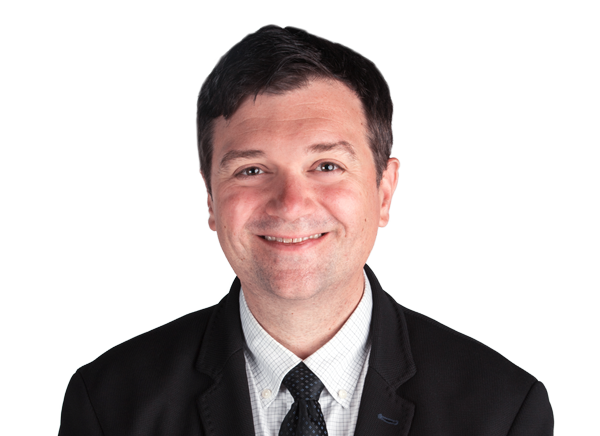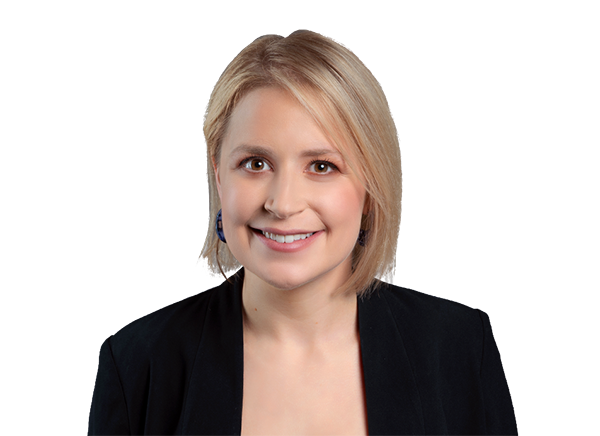The NHL trade deadline for the 2024-25 season is not until March 7, but teams have not waited until the last minute to make major moves.
For every significant trade that occurs during the season, you’ll find a grade for it here, the Colorado Avalanche and San Jose Sharks swapping goaltenders, Cam Fowler to the St. Louis Blues, Kaapo Kakko to the Seattle Kraken, the blockbuster deal sending Mikko Rantanen to the Carolina Hurricanes and Martin Necas to the Avalanche, J.T. Miller from the Vancouver Canucks to the New York Rangers, and the Canucks staying busy and getting Marcus Pettersson from the Pittsburgh Penguins.
March 1 featured three big trades, with Ryan Lindgren headed to the Colorado Avalanche, the Minnesota Wild adding Gustav Nyquist, and Seth Jones joining the Florida Panthers.
Read on for grades from Ryan S. Clark and Greg Wyshynski, and check back the next time a big deal breaks.
Jump to a trade:
Frederic to EDM
Jones to FLA
Nyquist to MIN
Lindgren to COL
Granlund to DAL
J.T. Miller to NYR
Pettersson to VAN
Farabee, Frost to CGY
Rantanen to CAR
Kakko to SEA
Fowler to STL
Blackwood-Georgiev
Trouba to ANA
Jiricek to MIN

The Edmonton Oilers acquired Trent Frederic and Max Jones from the Boston Bruins in a trade that also included the New Jersey Devils as the third-party facilitator.
The Devils will retain 25% of Frederic’s salary, sending prospect Petr Hauser to Boston (which is retaining 50% of Frederic’s salary) and receiving unsigned prospect Shane Lachance from Edmonton. The Bruins sent Hauser and Jones to Edmonton for prospect Max Wanner, the St. Louis Blues’ second-round pick in 2025 and the Oilers’ fourth-round pick in 2026.
How did each GM do in the deal? Here are the grades:
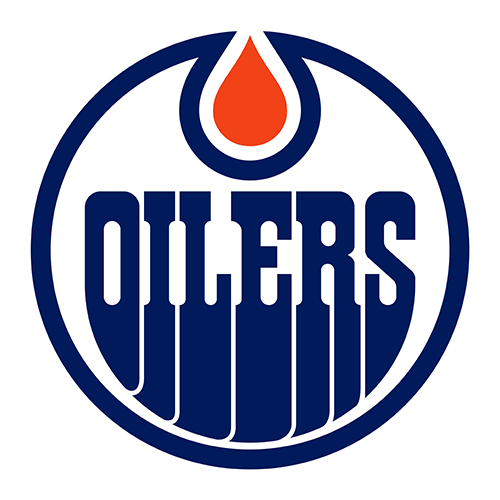
Frederic is an ideal addition to the Oilers’ forward depth. He brings size (6-foot-3, 220 pounds) and can throw that frame around, leading the Bruins in hits per 60 minutes (11.2) over the past two seasons. But he’s not lumbering — Frederic can skate well and contribute offensively.
OK, that last bit is theoretical: The 27-year-old had two seasons of offensive growth, culminating in 18 goals and 40 points in 82 games last season. That has regressed to eight goals and 15 points in 57 games this season. He’s a finisher whose shooting percentage has dropped by 4% year over year. But it should be said that he’s not the only Boston forward to have an offensive setback this season.
NHL trade deadline content
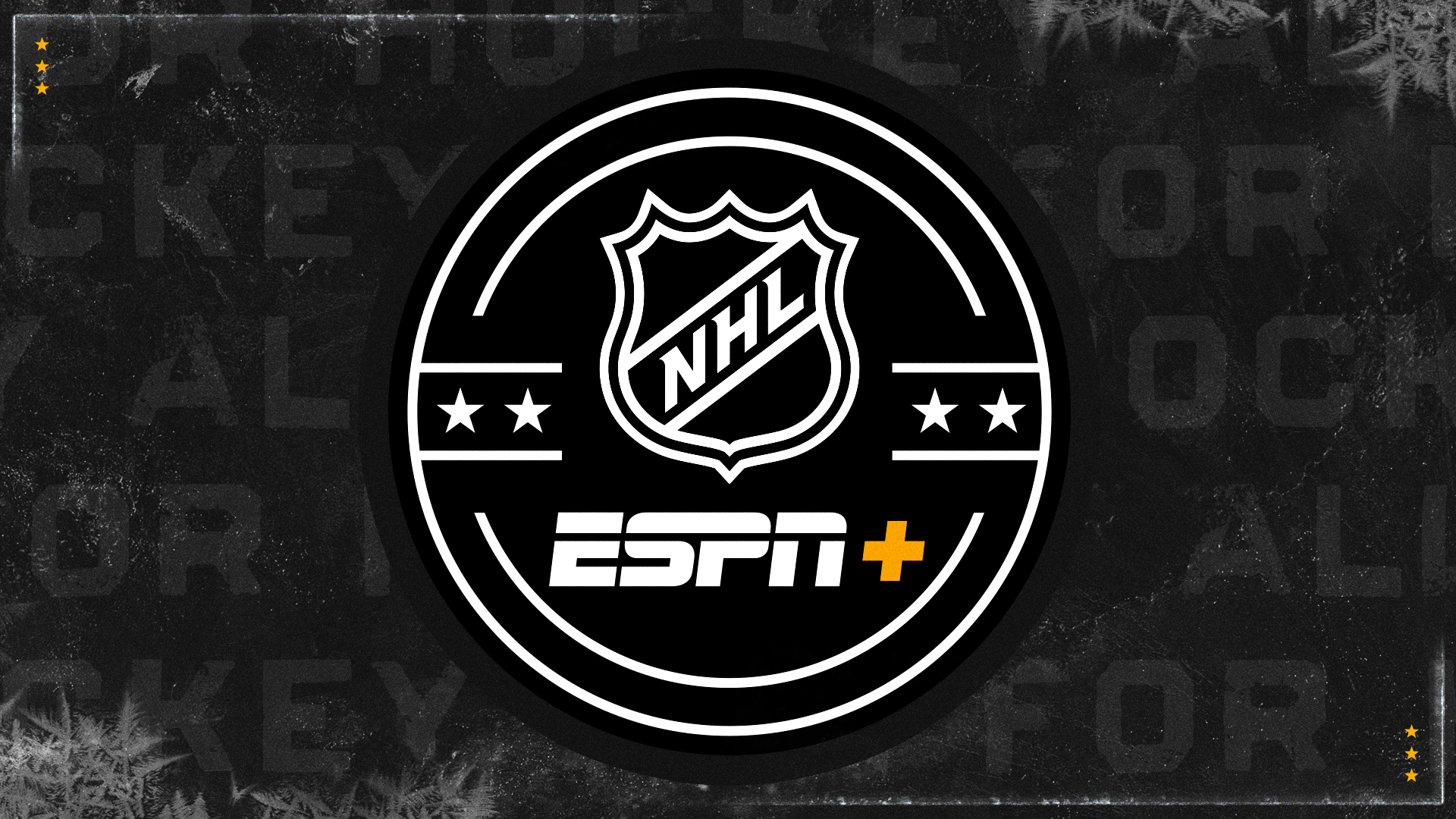
The trade deadline for the 2024-25 NHL season is March 7. This year’s coverage will include a special episode of The Point, from 2-4 p.m. ET on ESPN2 and ESPN+. Get caught up here before the big day:
• Team-by-team guides
• Top players available
• Contender flaws (and solutions)
• Grades for all the big trades
Frederic can also kill penalties effectively, which is good news for an Oilers team that’s not very good at that this season (75%, 26th in the NHL).
Best of all is the cap number, which GM Stan Bowman got whittled down to $575,000 thanks to double retention by the Bruins and Devils. Edmonton is in a bit of a salary cap conundrum with Evander Kane’s injury status, so a thrifty acquisition like this was paramount.
There is a downside for this trade, which is Frederic’s health. He’s currently out with a lower-body injury and considered “week to week.” One assumes Edmonton got assurances about his injury timeline, but this isn’t exactly ideal.
Jones is a throw-in winger, but one who has seven seasons of NHL experience under his belt — although he saw more time in the AHL than in Boston this season. He was a bust with the Bruins, however.
Czech forward Hauser, a fifth-round pick by the Devils in 2022, stands around 6-foot-4. The 21-year-old is a project if the Oilers eventually sign him.

Once GM Don Sweeney made it clear that Brad Marchand would potentially be the only pending unrestricted free agent the team would negotiate with before the trade deadline, Frederic might as well have started packing his bags.
Even if Boston was in a playoff spot, it might have traded this pending UFA anyway for future assets. The $1.15 million they retained on Frederic is their first retention spot used this season. Hey, it’s not like they’re going to be adding.
That second-rounder they received should be upper-to-middle-range in the draft, given where the Blues are in the standings. Boston didn’t have one of its own this season after trading it to Washington in 2023 in the Dmitry Orlov swap.
Wanner is a 21-year-old, right-shooting defenseman who spent the past two seasons with the AHL Bakersfield Condors. He was buried on the Oilers’ depth chart, having struggled through a season that saw him miss time due to injury. Not a bad prospect for the Bruins to get into their pipeline.
The Bruins also found a taker for the last year of that Jones contract ($1 million), which is a plus even though he was a minus in his seven games in Boston.
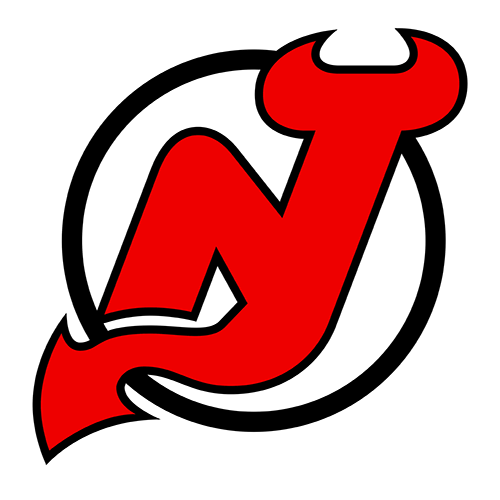
On the one hand, this is New Jersey basically paying $575,000 for the rights to Shane Lachance, a 21-year-old winger who captains Boston University and stands 6-foot-5. He has 25 points in 32 games this season for the Terriers, after being selected No. 186 overall in 2021 by the Oilers.
On the other hand, let it never be said the NHL isn’t a land of potential nepotism: Lachance’s father is former New York Islanders defenseman Scott Lachance, who is the Devils’ head of U.S. scouting.
Still, not a bad bit of salary retention business at the deadline for the Devils. If Lachance’s skating ever improves, they might have something there. — Wyshynski

After saying he wanted to play for a contender, Seth Jones is now a member of the defending Stanley Cup champions.
The Florida Panthers acquired Jones and a 2026 fourth-round pick from the Chicago Blackhawks with goaltender Spencer Knight and a conditional 2026 first-round pick going the other way. The Blackhawks will also retain 25% of Jones’ salary for the next five seasons.
How did each front office perform in the NHL’s latest blockbuster? Let’s find out.
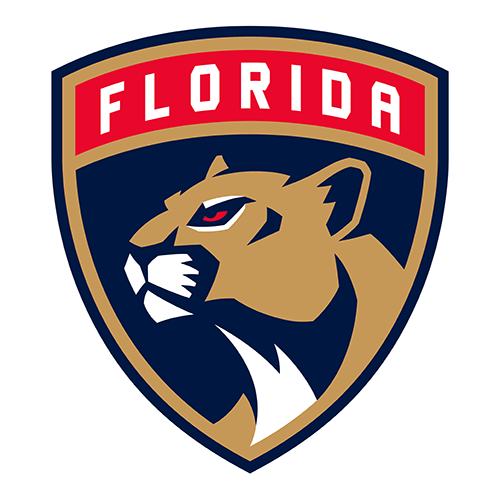
It was never a question of whether the Panthers needed Jones. They did. But many wondered whether the Panthers had the capital to pull off a deal. Turns out, the Panthers had a different kind of capital.
They provided the Blackhawks with a first-round pick one would expect for a top-pairing, right-handed-shooting defenseman such as Jones. But to include Knight in the deal and have the Blackhawks retain $2.5 million in salary over the next four years?
There are many layers to that decision, so let’s unpack it.
Editor’s Picks
2 Related
The package that Panthers GM Bill Zito presented to the Blackhawks was something that checked two significant boxes:
-
He provided a rebuilding team with a 2026 first-round pick that ensures the Blackhawks will have at least two first-rounders in every draft since 2022
-
Zito also offered Knight, a 23-year-old goaltender who was a first-round pick in 2019
The Panthers had a hole on the right side of their defense beyond Aaron Ekblad, the second-longest tenured player on the roster. Ekblad is an unrestricted free agent in the final season of an eight-year deal worth $7.5 million annually. PuckPedia projects Florida will have $20.5 million in cap space this offseason, which means a deal could be struck to keep Ekblad. The Panthers can also use that space to re-sign forward Sam Bennett, another pending UFA.
Jones is under contract for four more years at a rate that provides flexibility, and the Panthers have a top-four unit this season that features Gustav Forsling, Niko Mikkola and Ekblad.
Although … at what potential long-term cost?
The Panthers needed to decide their long-term plans in net. They won the Cup last season — and have had the greatest period in franchise history — with future Hall of Famer Sergei Bobrovsky as their No. 1 option. Meanwhile, Knight developed into a backup, and was slated to be his heir apparent in the crease.
Bobrovsky, 36, has one year remaining on his deal at $10 million before hitting free agency. Some thought the Panthers could recoup those savings and re-sign Knight, who is 13 years younger, to a new contract.
Including Knight in the deal to get Jones means the Panthers must find another solution in goal post-Bobrovsky. In the interim, the Panthers have a proven backup option in Chris Driedger, with the 30-year-old playing this season in the AHL.
If the Panthers win another Cup this season — or when they have Jones on the roster, the cost of losing Knight is easily justified.

Finding a legitimate franchise goalie is difficult, yet the Blackhawks may have just found one in Knight.
Think about the conversation that’s being had right now about the state of American hockey: Goaltending is one of the biggest advantages the United States has, with Connor Hellebuyck, Jake Oettinger, Jeremy Swayman, Thatcher Demko and rookie Dustin Wolf all being developed in the country.
It wasn’t that long ago when Knight, who was a first-round pick partly due to his prototypical size, was in that conversation. Going to the Blackhawks and possibly establishing himself as the outright No. 1 goalie could see him get back into the mix.
But what does his arrival mean for the Blackhawks’ goaltending landscape?
Knight is now the fourth goalie on the Blackhawks’ NHL roster who is either under contract for next season or the team has control via restricted free agency. Laurent Brossoit, who is on injured reserve, has a year remaining at $3.3 million while Petr Mrazek has a year remaining at $4.25 million. Arvid Soderblom costs only $963,000 but he’s the RFA.
Top stories of the week from 
Get exclusive access to thousands of premium articles a year from top writers.
• Where does Mohamed Salah’s season rank? »
• A+ to more than 10 D’s: MLB grades are in! »
• 2026 recruiting: Five hot CFB schools »
More ESPN+ content »
With Knight on the roster, the Blackhawks could trade one of those other goaltenders, with the hopes of adding even more draft capital to what’s already a rather strong reserve of draft picks. This would also open the door for Knight to get more playing time. He’s 12-8-1 with a 2.40 goals-against average and a .907 save percentage in 23 games for Florida. The most he has played in an NHL seasons is 32 games, while the most he’s had in his professional career are the 45 he played last season in the AHL.
The more looming question around their goaltending landscape is: What does this mean for Drew Commesso?
Commesso was a second-round pick in 2020 that came through the famed United States National Team Development Program before he played three seasons at Hockey East powerhouse Boston University. Commesso’s final two seasons at BU reinforced the belief he could become the Blackhawks’ goalie of the future.
He finished his first AHL season with a 2.65 goals-against average and a .906 save percentage in 2023-24. Commesso is still in the AHL but played two NHL games in mid-December. He allowed four goals on 24 shots to the New Jersey Devils in one of those games before he was sent back to the minors.
Since then, he’s had 15 starts in the AHL and has allowed more than three goals in 15 of those outings. That includes a run of five consecutive games in which he allowed more than three. In total, he’s allowed more than three goals in 15 of his 25 games this season; to be fair, he’s played behind a team that has been inconsistent throughout the season.
In other words, finding another young goaltending option was a possibility this trade season.
But instead of just another option, they added one of the few goaltenders who has gone in the first round in recent memory, further strengthening a youth movement that’s considered one of the NHL’s most promising. — Clark

Shortly after one Central Division team made a trade on Saturday, two more made a deal with each another.
The Minnesota Wild received forward Gustav Nyquist from the Nashville Predators in exchange for a 2026 second-round pick, with the Predators retaining 50% of Nyquist’s salary.
Here’s a quick glance at what it means for both clubs.
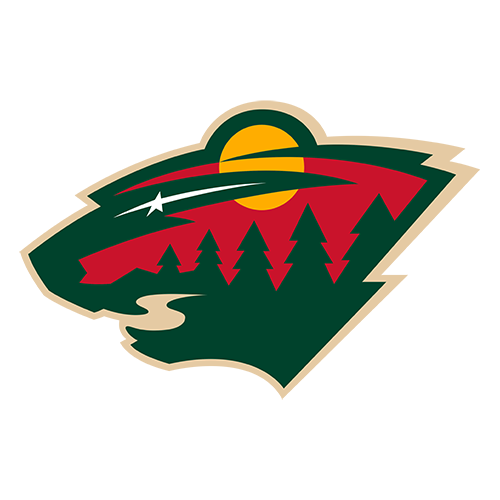
Any deal the Wild were going to make ahead of the deadline had to fit within their salary cap constraints. They entered Saturday with minus-$603,556 in projected cap space, but Kirill Kaprizov and his $9 million cap hit going to long-term injured reserve meant there was extra room, per PuckPedia.
Having a manageable cap hit, among other items, is what made Nyquist such an attractive option for the Wild — or any team that needed additional offensive support at a team-friendly price tag.
Breaking News from Emily Kaplan
Download the ESPN app and enable Emily Kaplan’s news alerts to receive push notifications for the latest updates first. Opt in by tapping the alerts bell in the top right corner. For more information, click here.
Getting the Predators to retain 50% of Nyquist’s salary means the Wild are on the hook for $1.595 million. PuckPedia indicates the Wild have a little more than $6.632 million in deadline cap space; it’s possible they could add more before Friday’s deadline.
The expectation is that the Wild could add another forward. There has been a need for offensive consistency since December when Kaprizov, who emerged as a Hart Trophy candidate, sustained an injury that has kept him out of the lineup. His 23 goals still lead the Wild, while his 52 points are tied for the team lead — despite playing 23 fewer games than current leader Matt Boldy.
The situation got worse this week when top-line center Joel Eriksson Ek was injured, and he’ll be out on a week-to-week basis with a lower-body injury. The Wild entered the weekend ranked 21st in goals per game; despite that, they are third in the Central Division, while having the same number of points but played one fewer game than the Colorado Avalanche, who hold the first wild-card spot.
The Wild could move Nyquist to their first or second line while shifting Vinnie Hinostroza, who was on their second line, to the third. There is belief that Nyquist can ramp his scoring back up to previous levels; he’s scored just nine goals and 21 points in 57 games for the disappointing Predators, but he had 23 goals and 75 points in 81 games this past season.
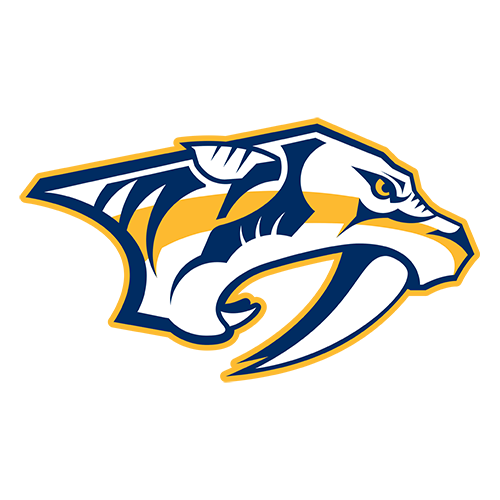
At one point, the Predators were believed to be a team that was going to be active at the deadline because they would be challenging for a playoff spot.
Instead, the Predators are now focusing on their future. Part of that includes reshaping portions of their roster, and that’s what ended Nyquist’s time with the club before the deadline.
He was Nashville’s most prominent pending UFA in a market that also has other forwards reportedly available, such as Yanni Gourde, Brock Nelson, Brayden Schenn and Jason Zucker, among others. His manageable cap hit meant the Preds were going to have options, and they found one that adds a nice bit of draft capital.
Given that they were already retaining part of Mattias Ekholm and Ryan Johansen’s contracts, and would have to retain on Nyquist, this deal had to be the right one.
Getting the Wild’s 2026 second-round pick adds to an impressive haul; the Predators may end up being one of the busiest teams ahead of the NHL draft if GM Barry Trotz elects to make subsequent deals.
The Predators have three first-round picks and two second-round picks in 2025, along with now having an extra second in 2026. — Clark

Finally! A trade has happened as we enter the final six days before the March 7 NHL trade deadline.
The Colorado Avalanche acquired defenseman Ryan Lindgren, forward Jimmy Vesey and prospect defenseman Hank Kampf from the New York Rangers on Saturday for forward Juuso Parssinen, defenseman Calvin de Haan, a conditional 2025 second-round pick and a conditional 2025 fourth-round pick. The Rangers will also retain 50% of Lindgren’s salary.
Here’s a look at how both GMs did in the trade.
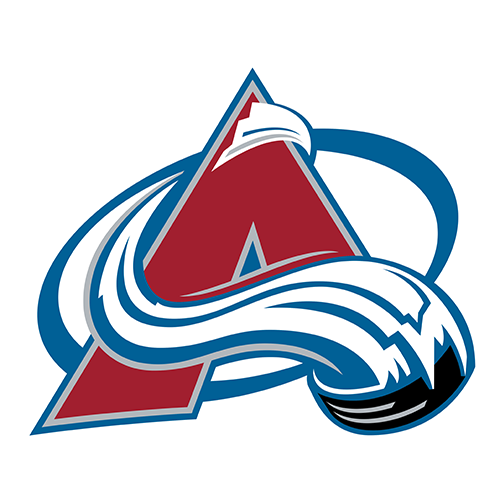
The Avs lost Josh Manson to an injury before 4 Nations Face-Off, and he remained out of the lineup through the Avs’ first four post-tournament games. His absence created questions about whom they would pursue to strengthen a top-four group that was using Oliver Kylington as a fill-in.
Getting Lindgren accomplishes a few items for the Avs:
-
He gives them a proven top-four, defensive-minded defenseman
-
Like Manson, he provides balance to a second pairing, which allows Samuel Girard to continue operating as a facilitator in the offensive zone
-
He can log heavy minutes on a penalty kill
This final part is critical, as it could lessen the burden on Devon Toews and Cale Makar, who lead the Avs in short-handed minutes (among other categories).
Editor’s Picks
2 Related
Vesey is a bottom-six forward with size who can be used in rotation with Ross Colton, Joel Kiviranta, Logan O’Connor and Miles Wood. He has just four goals and six points in 33 games this season, with the idea he could add more, considering he finished with more than 11 goals in consecutive campaigns before the 2024-25 season. He would also give them another forward option on the PK. He had three consecutive seasons of logging more than 85 minutes in short-handed sequences before this one. This season, he was limited to a little more than five total PK minutes with the Rangers.
This deal provides the Avs with a bit of a respite while Manson recovers, at a time when the club is trying to reach the playoffs either through one of the three Central Division spots or as a wild-card entry. Entering Saturday, the Avs were in the first wild-card spot. They have the same number of points as the Minnesota Wild, who are third in the Central, but the Wild have played one fewer game.
While both players are a fit, this trade works even better for the Avs because both Lindgren and Vesey are pending unrestricted free agents. That gives the Avs a six-player pending UFA class ahead of an offseason in which PuckPedia projects they’ll have only $8.2 million in cap space.

Lindgren’s future with the Rangers was in question as a pending UFA who might not have had a place in the blue-line rotation moving forward.
The Rangers will need to re-sign RFAs K’Andre Miller and Zac Jones this summer, while having a projected $17.83 million in cap space according to PuckPedia.
Re-signing Jones and Miller would complete a defensive unit that already has a Norris Trophy winner in Adam Fox signed to a long-term contract. Will Borgen, who they acquired in-season, went from earning $2.70 million this season to signing a three-year contract extension with the Rangers worth $4.10 million annually.
The Rangers also have Braden Schneider signed for one more season, while Urho Vaakanainen is another pending RFA. Plus, the recently promoted Matthew Robertson is another defenseman under contract for next season.
That gives the Rangers seven defensemen who were either signed or remain under team control for 2025-26, which made pending UFA Lindgren expendable.
That made it important for the Rangers to get something of value in return. They did so by adding draft capital for 2025, plus two players in de Haan and Parssinen who provide depth to a lineup that’s still trying to make the playoffs. The Rangers came into Saturday four points behind the Detroit Red Wings and Columbus Blue Jackets for the two Eastern Conference wild-card spots.
Moving on from Lindgren means the Rangers have adjustments they’ll need to make when it comes to who takes over on the second pairing and on the PK. It’s possible that either Jones or Schneider will get promoted to the second pair, while de Haan could be one of those players who helps fill the void left by Lindgren on the Rangers’ PK. — Clark

It’s been a week for the Dallas Stars.
Saturday was another extension of that week, with the Stars getting forward Mikael Granlund and defenseman Cody Ceci from the San Jose Sharks for a 2025 first-round pick and a conditional 2025 third-round pick.
How did both GMs perform in this trade? Let’s find out.
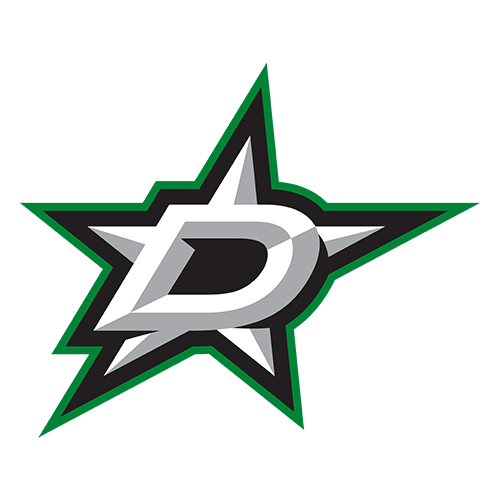
Let’s go back to the week the Stars were having. A week that started with a healthy complement of players saw them lose four players and extended amount of time. It started Thursday when they announced Miro Heiskanen was going to be out for multiple weeks with a lower-body injury. It continued Saturday when they placed defenseman Nils Lundkvist and forward Tyler Seguin on Long Term Injured Reserve while moving forward Mason Marchment to injured reserve.
Editor’s Picks
2 Related
Less than two hours later, they traded for Granlund and Ceci in a move that should help the Stars in the interim and throughout the rest of the season.
As for the short-term outlook, Granlund provides them with another top-six, two-way forward who can be trusted to play in key minutes in 5-on-5 situations, the penalty kill and the power play. It’s possible that the Stars would use Granlund as their third-line center with Seguin out of the lineup.
Heiskanen’s absence created a top-four opening and the additional loss of Lundkvist meant there was an even greater need on the back end. Ceci gives them a player who can operate in a top-four role while Heiskanen is out. When Heiskanen returns, Ceci can be shifted into a third-pairing role, allowing the Stars to have a rotation between Lian Bichsel and Matt Dumba on that final pairing.
It’s the sort of move that fits for a team in a championship window like the Stars. Ceci and Granlund are pending unrestricted free agents at the end of the season. They’ll be part of an eight-player UFA class that features captain Jamie Benn and Wyatt Johnston.
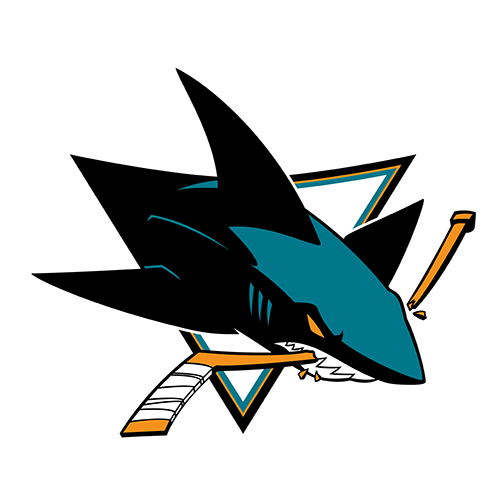
The Sharks have built their roster in a way that allows their young core of Macklin Celebrini, Will Smith, William Eklund and Yaroslav Askarov more opportunities to develop. But it’s also been constructed in a manner that has allowed them to have pending UFAs they could move ahead of the deadline.
That’s what made having Ceci and Granlund so valuable for the Sharks.
With this trade, San Jose was able to accomplish two objectives. It was able to get what is now a second first-round pick in this year’s draft while adding a third-round pick to give them a total of eight picks — and they could add more.
Another is it didn’t have to take on any salary or need a third-party broker to facilitate a trade for two players who had some of the higher salaries on the team.
Part of the challenge facing the Sharks ahead of this particular trade deadline is the lack of salary retention slots. They’ve retained money on Brent Burns, Tomas Hertl, and Erik Karlsson. They’ll get the Burns contract off the books this year while having two more years of Karlsson and three more years of Hertl.
So, to get a deal done for two of their more coveted UFAs without having the retain any salary creates the potential to move some of their seven remaining pending UFAs without any additional financial challenges. — Clark

The NHL. Where apparently Friday nights are the prime time for blockbuster trades?
This time it was the New York Rangers, who acquired long-time target and center J.T. Miller in a trade with the Vancouver Canucks. The Rangers received Miller, defenseman Erik Brannstrom and prospect defenseman Jackson Dorrington, with center Filip Chytil, prospect defenseman Victor Mancini and a protected 2025 first-round pick going to the Canucks.
Let’s look at how each GM did and what the impact could be going forward.

The Rangers might be many things this season. Boring sure isn’t one of them.
They traded their captain Jacob Trouba. They moved on from the one-time No. 2 pick in the draft (Kaapo Kakko) who was thought to be one of the future faces of the franchise. Now they have acquired one of the most coveted players more than a month ahead of the NHL trade deadline.
Can getting Miller be the move that helps the Rangers go from being five points out of the final wild-card spot in the Eastern Conference in late January to landing a playoff spot by the end of regular season?
Breaking News from Emily Kaplan
Download the ESPN app and enable Emily Kaplan’s news alerts to receive push notifications for the latest updates first. Opt in by tapping the alerts bell in the top right corner. For more information, click here.
Miller provides the Rangers with another dimension they were lacking within their top nine. He probably could find a place in the top six either as a winger or somewhere down the middle. Either way, he creates possibilities that they just didn’t have before.
Miller gives them another two-way forward they could pair with Vincent Trocheck on the first line. Or he could be paired on the wing with Mika Zibanejad on the second line. But those aren’t the only options. There’s also the possibility the Rangers could play Miller down the middle to create a dynamic that has him, Trocheck and Zibanejad anchoring their top three lines.
That’s one dimension. What he offers from an offensive consistency standpoint is another. Miller sat out games earlier this season but is still projected to finish with 57 points in 66 games. That’s an average of 0.86 points per game.
Artemi Panarin is the only Ranger who’s averaging more points per game this season. Miller is a candidate to play on the first-team power-play unit considering he has 14 power-play points, which would be third on the Rangers behind Panarin and Adam Fox.
Getting Miller goes well beyond what he could do for the Rangers this season. He’s in the second year of a seven-year contract that provides the Rangers with cost certainty ahead of an offseason where they face looming decisions.
Having cost certainty probably played a role in why they were comfortable moving on from Mancini after signing Will Borgen, who arrived in the Kakko trade, to a five-year deal worth $4.1 million a season.
The money the Rangers committed to Borgen plus what they’ve added from Miller’s contract means they’re going to have what PuckPedia projects is $18.69 million available ahead of what should be a busy offseason. The Rangers have a six-player restricted free agent class led by Will Cuylle and K’Andre Miller, while Ryan Lindgren is a pending UFA after signing a one-year deal worth $4.5 million.
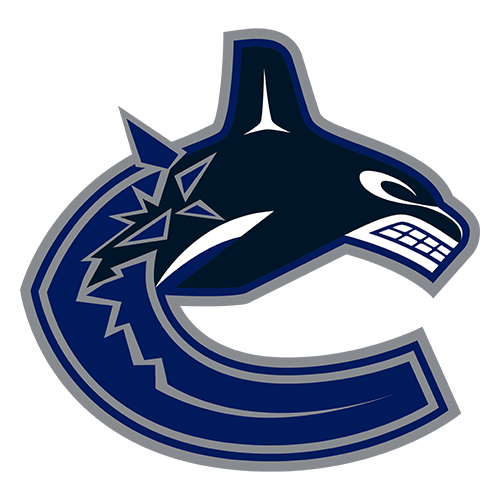
NHL front offices are not a monolith. But they all value secrecy. So, when Canucks president of hockey operations Jim Rutherford confirmed there was a rift between Elias Pettersson and Miller, it made the possibility of a trade even more probable.
Of the two, Miller appeared to be the one who was going to leave. He’s older by five years and his $8 million annual cap hit was going to be easier to move than Pettersson’s $11.6 million.
Miller has finished with more than 80 points in the past three seasons and is averaging 0.88 points per game this season. Pettersson has had two seasons in the past three in which he has finished with more than 80 points and is averaging 0.72 points per game this season.
Miller’s departure should hypothetically bring a resolution to the tension that was building within the Canucks’ organization. Figuring out if his departure can lead to Pettersson regaining offensive consistency while also trying to make the playoffs is another matter.
The situation facing the Canucks meant there was always a possibility they wouldn’t receive someone who could be a like-for-like replacement for Miller.
Now, the Canucks are in a position to trust Chytil with the demands that come with being a top-six center.
Editor’s Picks
2 Related
Promise has followed Chytil since he was drafted by the Rangers in the first round in 2017. There have been seasons when his potential surfaced such as when he had 22 goals and 45 points in 74 games in the 2022-23 season. But there have also been injuries that have made it hard for him to find consistency, including multiple documented concussions, one of which led to him sitting out 72 regular-season games last season.
The most ice time Chytil’s received through a full season came in his second year when he was averaging 14 minutes, 50 seconds. Miller was averaging close to 18 minutes this season but has averaged more than 19 minutes in every season he has played for the Canucks since arriving in 2019-20.
Miller was an important part of the Canucks penalty kill having logged more than 93 minutes of short-handed ice time per season over the past four seasons. Chytil has logged less than 15 minutes of short-handed ice time through his career, according to Natural Stat Trick.
But the Canucks have also shown that newcomers can find success in a short time. They’ve seen it the past few seasons with Filip Hronek, Andrei Kuzmenko and with Jake DeBrusk, who is on pace for a career-high 28 goals this season.
What Chytil does provide the Canucks is additional cap space. He’s making $4.44 million annually, a savings of more than $3.5 million that could prove useful before the trade deadline. Chytil has two more years left on his contract and would be eligible for free agency after the 2026-27 season.
It’s also the type of savings that could aid the Canucks in the offseason given Brock Boeser is in the final season of a contract that pays him $6.6 million annually.
As for everything else in the trade? The Canucks picking up a protected-top 13 pick means they’ll have two picks in 2025. It’s possible they could use one of those along with what PuckPedia projects to be $12.198 million in deadline cap space to facilitate a deal.
Mancini, a fifth-round pick in 2022, provides the Canucks with another young defenseman in a system that already has Sawyer Mynio, Elias Pettersson and Tom Willander. Mancini had five points in 15 games for the Rangers before returning to the AHL where he has three goals and 10 points in 23 games. — Clark

Because one Friday evening trade wasn’t enough for the Vancouver Canucks.
They used the first-round pick they received from the J.T. Miller trade few hours earlier in another deal to get defenseman Marcus Pettersson from the Pittsburgh Penguins. The Canucks also received forward Drew O’Connor with forward Danton Heinen, defenseman Vincent Desharnais, the rights to forward Melvin Fernström and the first-round pick going to Pittsburgh.
Let’s look at how both front offices fared.

Certain issues have been present throughout the Canucks season and finding a consistent partner for star captain Quinn Hughes was one of them.
Hughes logged 389 minutes in 5-on-5 play with Filip Hronek while also getting 333 minutes in 5-on-5 play alongside Tyler Myers, according to Natural Stat Trick. It’s a contrast from last season when Hronek and Hughes were nearly exclusive, logging close to 1,200 minutes together in 5-on-5 sequences.
The thought is Pettersson provides Hughes with a partner that can establish cohesion.
Pettersson is more than just a top-pairing partner for Hughes. He strengthens their top four options while adding to a defensive structure that is in the top five in fewest shots allowed per 60 and fewest scoring chances allowed per 60, according to Natural Stat Trick. He also logged more than 200 short-handed minutes last season, which gives Canucks coach Rick Tocchet one more option on a penalty kill that ranks 13th.
Although Pettersson fills one void, what role could O’Connor play in helping the Canucks address the void left by Miller’s departure.
Breaking News from Emily Kaplan
Download the ESPN app and enable Emily Kaplan’s news alerts to receive push notifications for the latest updates first. Opt in by tapping the alerts bell in the top right corner. For more information, click here.
O’Connor gives them another top-nine, two-way forward who will likely replace Heinen on the Canucks’ PK. But O’Connor, who scored 16 goals and 33 points last season, has only six goals and 16 points in 53 games. He is projected to finish with nine goals and 25 points.
It’s possible the Canucks could pair him on the second or third line next to Filip Chytil, who arrived in the Miller trade. If so, that gives them two players who’ve combined to score 36 points this season. Miller had 35 by himself, which raises questions about what this could look like from an offensive production standpoint for the Canucks.
Goals have been harder to come by than they were last season for the Canucks. They’re averaging the second-fewest shots per 60, the second-fewest scoring chances per 60 and rank 20th with 2.84 goals per game.
As for what it means in the bigger picture: The Canucks only took on an additional $705,000 in salary, and Pettersson and O’Connor are pending unrestricted free agents, whereas Heinen and Desharnais each had one more year remaining on their respective contracts.
Pettersson and O’Connor will be part of a six-player UFA class that also features Brock Boeser and Kevin Lankinen.
PuckPedia projects the Canucks will have a little more than $11 million in deadline cap space which means they could still find more offensive reinforcements over the next several weeks.
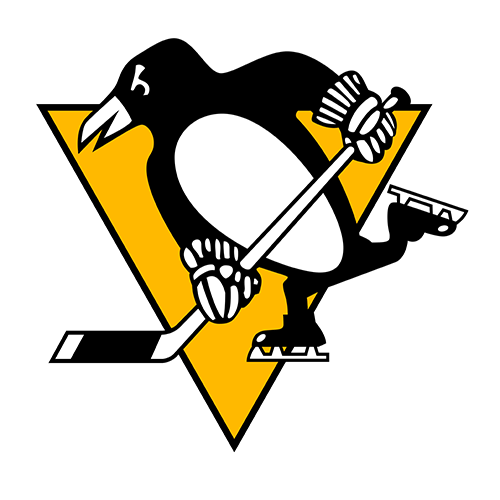
They’re seven points out of the final Eastern Conference wild-card spot. But they’re five points ahead of the Buffalo Sabres for the fewest points in the East and tied for the eighth-fewest points in the NHL which could see them being a factor in the NHL draft lottery.
It’s what made receiving a first-round pick from the Canucks arguably the most important aspect of the trade. They now have two first-round picks and that could prove critical given the current state of the Penguins farm system.
Pittsburgh has kept its first-round picks four times since 2013 and only twice since 2020. Having a pair of first-rounders might soften the fact the Penguins won’t pick again until the third round, where they currently have three picks.
What might be second-most-important detail is they were able to move on from Pettersson, who was previously their most expensive pending UFA, without having to fill their final retention spot.
Having that final retention spot could aid the Penguins as it appears they could be moving on from more players ahead of the deadline. They have six pending UFAs with the most expensive being Matt Grzelcyk, who carries a $2.75 million cap hit.
Desharnais, who has a year remaining at $2 million, provides the Penguins with another third-pairing option who can also be used on their penalty kill, as he logged nearly 43 minutes of short-handed ice time this season and nearly 160 minutes last season with the Edmonton Oilers.
Heinen, who also has a year remaining at $2.25 million, could take over for O’Connor in the top nine while also filling his role on the Penguins’ penalty kill. — Clark

Could one four-player swap prove beneficial for two teams in the wild-card race?
That’s what the Calgary Flames and Philadelphia Flyers will find out after a Thursday trade in which the Flames got forwards Joel Farabee and Morgan Frost in exchange for forwards Andrei Kuzmenko, Jakob Pelletier, a 2025 second-round pick and a 2028 seventh-round pick.
Here’s a look at how each GM operated and what it all means.
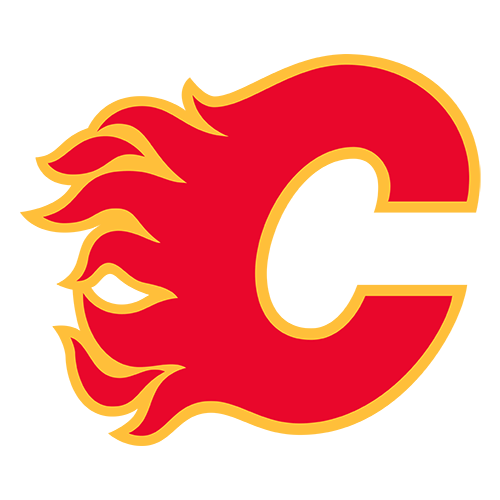
Even after this trade, the Flames still have more than $17.5 million in cap space (per PuckPedia), which is the second most in the NHL behind the Columbus Blue Jackets ($18.75 million).
Plus, the Flames still have two first-round picks for 2025 along with two first-round picks in 2026.
It’s a level of asset management and financial flexibility that could prove vital in their bid to reach the playoffs. At some point, they’ll have to weigh whether it’s worth parting with a first-round pick to land another player who would help their quest to secure a playoff spot; currently, they hold the second wild-card position in the West.
The question of what to do next will be determined over the next few weeks. For now, they have more pressing concerns. The main one being: What kind of production can they get immediately from Farabee and Frost?
Editor’s Picks
2 Related
Placing Connor Zary on injured reserve earlier this month only reinforced that need to find top-nine help. The scoring totals just don’t add up if this team is fighting for the playoffs.
Only the Anaheim Ducks, Nashville Predators, Chicago Blackhawks and San Jose Sharks are averaging fewer goals per game than the Flames.
Farabee and Frost could potentially help the Flames address their offensive concerns. Farabee is a two-time 20-goal scorer who scored 50 points last season, while Frost could notch his third consecutive 40-point campaign.
Thus far, Farabee has scored eight goals, averaging 0.39 points per game, which has him on pace to finish with 12 goals and 29 points in 77 games. If he continues at that projection, it will result in his poorest offensive season since his rookie season in 2019-20 when he scored 21 points in 52 games.
Frost, on the other hand, has an opportunity to get back on track after spending the last two seasons coming under fire from Flyers coach John Tortorella. He’s on pace for 17 goals, which would be the second most of his career, while his 39-point projection over 76 games would just fall short of the 41 points he accrued in 71 games last season.
Making the playoffs for the first time since the 2021-22 season appears to be a priority for this franchise. Another is the need to find stability, considering the Flames’ many trades over the last three seasons.
Any role Farabee and Frost can play in that playoff pursuit could further justify whatever plans the Flames may have for them down the road.
Kuzmenko was in the final season of a two-year deal ($5.5 million average annual value), while Pelletier was a pending restricted free agent. Swapping them for Farabee and Frost provides the Flames with more certainty.
Farabee has three years left on his contract carrying a $5 million AAV. Frost is a restricted free agent who is coming off a two-year bridge deal that saw him earn $2.1 million. The Flames would have one more year of control after this season before Frost becomes an unrestricted free agent at the end of the 2025-26 campaign.
They were able to add two players that could help them now and possibly in the future while holding only losing a minimal amount of cap space and keeping those first-round picks.
Those are the circumstances that gives Flames GM Craig Conroy the sort of options ahead of the trade deadline most in his role would covet.
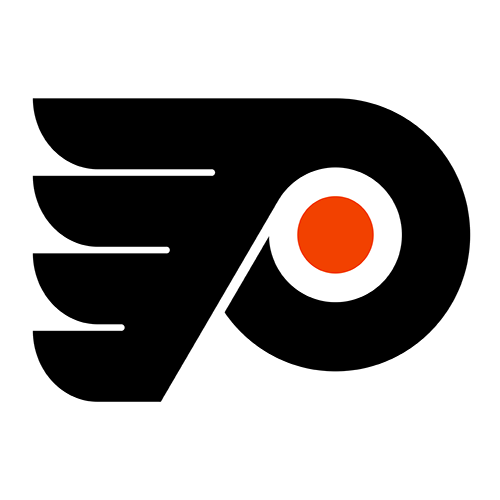
Moving on from Farabee could play a significant role in whatever path the Flyers opt to take in the offseason.
Initially, the Flyers were slated to have $12.88 million in available cap space heading into the summer. But the only money coming off their books was the combined $3.4 million between Rodrigo Abols and Erik Johnson on expiring contracts, along with the Tony DeAngelo buyout at $1.67 million.
Shedding Farabee’s salary (and with Kuzmenko on an expiring deal) means they are projected to have $17.88 million in cap space entering the offseason, according to PuckPedia.
In addition, the second-round pick they received in this deal gives them seven in the first two rounds, including three in the first.
But just how the Flyers choose to spend their money in the summer could hinge upon how Kuzmenko performs.
NHL trade deadline content

The trade deadline for the 2024-25 NHL season is March 7. This year’s coverage will include a special episode of The Point, from 2-4 p.m. ET on ESPN2 and ESPN+. Get caught up here before the big day:
• Team-by-team guides
• Top players available
• Contender flaws (and solutions)
• Grades for all the big trades
Part of Kuzmenko’s appeal is that he has found ways to have instant success in new places. His first season with the Canucks was a breakout, with 39 goals and 74 points. His second season was a step back, with just eight goals and 21 points in 45 games before he was traded to the Flames; he got off to a hot start again, with 14 goals and 25 points in 29 games.
That trend is what makes him a possibility on the second line where he could play alongside Sean Couturier and former SKA St. Petersburg teammate Matvei Michkov. The “high-scoring newcomer” version of Kuzmenko would be highly useful, as the Flyers are five points out of the second wild-card spot.
The scoring will help, but Kuzmenko’s play in the defensive zone will dictate quite a bit. Especially with the Flyers in the top five in the fewest shots allowed per 60 and ranked 12th in the fewest scoring chances allowed per 60, according to Natural Stat Trick.
As for Pelletier, the Flyers hope he can continue to build upon what has been his strongest professional season to date. He began the campaign in the AHL, where he had 19 points in 20 games, before he was called up to the Flames in early December.
He has gradually made a case for more playing time. Pelletier went from averaging a little more than 11 minutes per game in December to just under 15 minutes per game in January. It resulted in an offensive return of four goals and 11 points in 24 games, while also logging more than 33 minutes of short-handed ice time.
Like Frost, he’s a pending RFA. But Pelletier’s $800,000 cap hit means that he could become a more cost-effective option compared to what Philly would have had to pay Frost. –Clark

Quiet. Quiet. Quiet. Then the NHL got loud Friday with the first blockbuster trade in recent memory.
The Colorado Avalanche traded winger Mikko Rantanen in a three-team deal involving the Carolina Hurricanes and Chicago Blackhawks. Both Taylor Hall and Rantanen went to the Hurricanes, with Jack Drury and Martin Necas going to the Avs. The Avs also received a 2025 second-round pick and a 2026 fourth-round pick from the Hurricanes. The Blackhawks reacquired their 2025 third-round pick while retaining 50% of Rantanen’s salary. Prospect Nils Juntorp went from Chicago to Colorado then to Carolina.
How did each GM perform on a landscape-altering trade? Let’s find out.
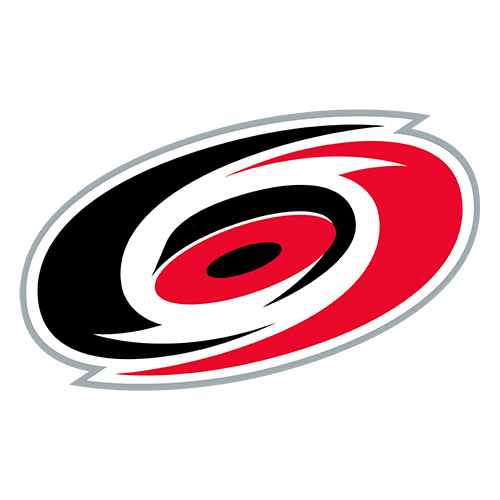
Quite simply, the Hurricanes are coming for everyone.
The franchise that built its success from drafting and developing has now added an aggressive edge to be active in free agency, while pursuing the sort of trades that make them an even stronger Stanley Cup contender.
Already one of the NHL’s more legitimate championship front-runners, the Canes getting Rantanen and Hall only heightens the expectations that they have a roster capable of winning it all this season.
Rantanen provides a level of goal scoring and playmaking ability that could make a potential first line featuring Sebastian Aho and Andrei Svechnikov one of the most dangerous in the NHL. Rantanen’s ability to facilitate play while using his powerful 6-foot-4 frame to fend off defenders could be the detail that allows Aho and Svechnikov the needed time to find the type of space that puts opponents in a difficult spot.
Editor’s Picks
2 Related
Trading Necas takes away one of the Canes’ most consistent two-way players. But it hypothetically moves Jackson Blake to the second line while Hall is part of a middle-six winger pool that also features Seth Jarvis, Jordan Martinook, Jack Roslovic and Eric Robinson.
Suddenly, a team that was averaging the fifth-most goals per game in the NHL this season has added more options in the form of Rantanen — one of the game’s most consistently prolific players — while Hall, a one-time Hart Trophy winner, could potentially finish the season with 20 goals. Those additions could also jump-start a power play that came into Friday ranked 17th.
And this is being done with the Blackhawks retaining half of Rantanen’s $9.25 million cap hit while Hall, who is also a pending UFA, carries a $6 million cap hit.
First-year Canes GM Eric Tulsky, who was previously one of their assistant GMs, has set a tone that the priority is to win this season. But this is also the sort of trade that is going to provide Tulsky with another test.
Can he re-sign Rantanen?
Rantanen is a pending unrestricted free agent who can land one of the NHL’s richest contracts over the coming months. It’s possible the Hurricanes could strike a deal for him. But it will take some work.
They have nine contracts coming off the books this offseason, with the most notable being Frederik Andersen ($3.40 million), Brent Burns ($5.28 million) and Dmitry Orlov ($7.75 million). PuckPedia projects the Canes will have $22.98 million available in cap space, which could be used to re-sign Rantanen while leaving enough left over to strengthen the rest of the roster.
But for now, Tulsky and his team get the highest marks.

Practically any conversation about what has made the Avs one of the NHL’s most successful teams over the past six seasons has included Rantanen’s name.
His ability to create for himself, create for others, and do it in a way that could either complement Nathan MacKinnon and Cale Makar — but wasn’t reliant on MacKinnon and/or Makar — is what made Rantanen quite valuable. He is a five-time 30-goal scorer and also hit the 50-assist mark five times.
And maybe all of that was the problem for the Avs and Rantanen when it came finalizing any sort of deal.
Rantanen was a pending unrestricted free agent in the final season of a six-year deal that saw him earn $9.25 million per year. At the time he signed the contract, he was the Avs’ highest-paid player. Entering this season, he was second behind MacKinnon, who is in the first year of a deal that sees him earn $12.6 million annually.
Each month that passed without both sides agreeing to a deal led to talk that maybe the Avs could move on from Rantanen. But it initially appeared that the talk was, well, just that.
Until it wasn’t.
It appears the impasse the Avs were facing with Rantanen was the premium that comes with having a third superstar. Even though the salary cap will continue its rise in the coming years, there were still financial considerations the Avs’ front office had to ponder.
Breaking News from Emily Kaplan
Download the ESPN app and enable Emily Kaplan’s news alerts to receive push notifications for the latest updates first. Opt in by tapping the alerts bell in the top right corner. For more information, click here.
They have three more years of Valeri Nichushkin ($6.31 million per year) and Devon Toews ($7.25 million). Ross Colton ($4 million), Samuel Girard ($5.75 million), Arturri Lehkonen ($4.5 million) and Casey Mittelstadt ($5.75 million) are part of a group that has two years left on their deals.
Then there’s the money they didn’t expect to take on this season when their original goaltending tandem of Justus Annunen and Alexander Georgiev began to struggle and cost the team wins.
Annunen’s and Georgiev’s deals cost a combined $4.237 million cap hit that brought an extra layer of financial flexibility. Annunen is a pending restricted free agent and Georgiev was going to be a pending UFA.
But then, the Avs replaced them with Mackenzie Blackwood and Scott Wedgewood. While it strengthened the weakest area of the team, it came with a cost. Blackwood signed a three-year deal less than a month after they acquired him, which saw his salary go from $2.35 million annually to $5.25 million annually next season.
Now the Avalanche have $6.75 million committed to their goalies through 2025-26.
Having that much money wrapped up in those players — along with the Gabriel Landeskog uncertainty, and the fact he has three more years left at $7 million on his contract — comes against the backdrop of what the Avs must contend with after the 2026-27 season when Makar will need a very large new contract.
It’s possible Makar could command the biggest contract in the NHL. And if so, it would leave the Avs needing as much financial flexibility as possible in an offseason that also sees Colton, Girard, Lehkonen and Mittlestadt reach free agency.
That’s one of the hypotheticals facing the Avalanche. Another was why take the risk in losing one of the NHL’s premier wingers for nothing?
Although Necas is not a prolific producer like Rantanen, he does provide the Avs with a consistent two-way center who can anchor their second line in a way in which others have struggled since Nazem Kadri left in free agency after winning the Stanley Cup in 2022.
Necas is averaging a career-best 1.12 points per game this season, with the belief those figures could either sustain or increase given the Avs have a history of seeing new players succeed in their system.
There’s also the financial implication in that Necas has one more year left on his deal at $6.5 million before he hits free agency. Should the Avs look to re-sign him, the expectation is it would hypothetically come at a cost that is much cheaper compared to whatever Rantanen would have commanded.
While the chances of finding a like-for-like trade might have proved difficult, the Avs still received a two-way top-six center in Necas, with Drury giving them another bottom-six option.

Asset management is everything for rebuilding teams. The Blackhawks know this, which is what makes their return in this trade rather puzzling.
Hall was expected to be moved ahead of the trade deadline. The Blackhawks were perceived to be looking to receive draft capital in return for a player who could either be a top-six or at least top-nine option for a contender.
Getting a third-round pick for Hall whether the Blackhawks retained any of his salary? OK, bet. Getting a third-round pick for retaining 50% of a salary to facilitate a deal as a third-party broker? Sure, that’s the price of doing business.
But to receive only a single draft pick while giving up Hall and retaining 50% of Rantanen’s salary? That raises quite a few questions about why the Hawks couldn’t attract more in this deal, particularly upon the realization that the Avs received a 2025 second-round pick and a 2026 fourth-round pick in addition to getting two NHL players in Drury and Necas.
The Blackhawks are not struggling for draft capital. They entered Friday with eight picks for 2025, nine picks for 2026 and seven picks in 2027. They’ll have four picks in the first two rounds this summer, including two first-rounders. But no franchise in a rebuild has ever openly complained about having too many draft picks.
They couldn’t get more than a single pick here?
There was always the hypothetical that Hall’s $6 million cap hit meant they would have had to retain salary. But retaining 50% of Rantanen’s salary costs more than it would have to retain the same percentage of Hall’s.
Moving on from Hall now means the Blackhawks have other pending UFAs who could be used to attain more draft capital. It’s a group that includes Ryan Donato, Pat Maroon and Alec Martinez among others, as the franchise is in line for its fourth consecutive top-10 pick and its third straight top-three pick.
Donato carries a $2 million cap hit and Maroon is at $1.3 million, which makes their salaries more affordable for an interested team. Martinez has a $4 million cap hit. — Clark

Another member of what was once considered the New York Rangers’ future is now gone, with the club trading Kaapo Kakko to the Seattle Kraken.
The Kraken received Kakko in exchange for defenseman Will Borgen, a 2025 third-round pick and a 2025 sixth-round pick.
Here’s a look at how both front offices performed with this trade and what it all means.

Shortly after the trade was announced, it was reported that Kakko’s quote to reporters before the team’s 2-0 loss Tuesday against the Nashville Predators did not play a role in the trade.
The 23-year-old forward was a healthy scratch in a 3-2 loss Sunday to the St. Louis Blues, which led to him saying, “I know you’ve got to do something as a coach when you’re losing games, but I think it’s just easy to pick a young guy and boot him out. That’s how I feel to be honest.”
Kakko had four goals and 14 points in 30 games. He was on pace for 11 goals and 37 points, entering the final season of his contract as a player who had yet to reach the heights of what was expected when he was the No. 2 pick of the 2019 draft.
Now Kakko is gone, and he becomes the latest personnel move in a season that has led to questions about where the Rangers go next — and if it could still somehow result in the club reaching the Eastern Conference finals for the third time in four years.
The Rangers had lost five in a row and six of their past seven games around the time GM Chris Drury sent a memo to the rest of the league to inform them the Rangers were open for business. It led to them trading captain and defenseman Jacob Trouba to the Anaheim Ducks on Dec. 6, a move that added salary cap space with Trouba still having another year left on his contract worth $8 million.
Moving on from Trouba meant Braden Schneider and Victor Mancini would receive more opportunities. Those plans changed with K’Andre Miller going on injured reserve Friday, which put a strain on a Rangers team that is 2-6 since Trouba was traded.
It’s why Schneider was partnered with rookie Zac Jones on the second pairing, with Urho Vaakanainen, who was acquired in the Trouba trade, on the third pairing with veteran journeyman Chad Ruhwedel.
Losing on Tuesday to the last-place Predators gave the Rangers a third straight defeat, during which time they were outscored 10-3.
Then came the trade that saw them get Borgen, send Mancini to the AHL and recall forward Matt Rempe.
Adding Borgen gives the Rangers another right-handed defenseman who has shown he can play top-four minutes while logging heavy minutes on the penalty kill — something the Rangers needed with Trouba still leading them in short-handed ice time as of Wednesday.
It’s also a move that provides them additional financial flexibility going forward. One of the challenges facing Drury and his front office staff was figuring out their cap situation ahead of next offseason. And that was before they signed superstar goaltender Igor Shesterkin to a long-term extension worth $11.5 million annually.
Jones, Kakko, Miller and Will Cuylle were all pending restricted free agents, while top-pairing defenseman Ryan Lindgren is a pending unrestricted free agent.
By flipping Kakko for Borgen, a pending UFA, it allows the Rangers another outlet to get money off their books with Borgen earning $2.7 million this season. It now leaves the Rangers with a six-player UFA class that also includes Jonathan Quick and Reilly Smith, among others.
This allows Drury & Co. more money to play with as the Rangers seek to keep their coveted core together. A core that no longer features a player who was once thought to be one of the faces of the future. And that’s the bottom line here; while Borgen is useful to fill the Trouba-sized hole, Kakko might have some runway left in his development, which will now be revealed in a Kraken sweater.

Kraken GM Ron Francis was able to take Borgen, who was the team’s pick from the Buffalo Sabres in the expansion draft, eventually turn him into a top-four defenseman, and trade him (with Day 2 draft picks) for a potential top-six forward in Kakko.
The key word being potential.
Development is one of the items that makes the NHL distinctive — and also makes it complicated. A 23-year-old in another professional sport would be met with the understanding that they’re not a finished product at such a young age.
That’s what the Kraken are banking on. It’s what the Rangers were also banking on, before pulling the rip cord on a forward who has played the second-most games of his draft class yet is sixth in points; for context, his fellow Finland countryman, Matias Maccelli, was taken 96 picks later and is separated by nine points despite playing 131 fewer games.
Kakko’s best season came in 2022-23 when he had 18 goals and 40 points in 82 games, averaging 15 minutes,18 seconds in ice time. Since then, he has scored 17 goals and 31 points in 91 games, while averaging 13:16 in ice time.
Breaking News from Emily Kaplan
Download the ESPN app and enable Emily Kaplan’s news alerts to receive push notifications for the latest updates first. Opt in by tapping the alerts bell in the top right corner. For more information, click here.
Coming to Seattle should lead to Kakko receiving opportunities that were much harder to come by in New York. Whether it be with Matty Beniers, Tye Kartye, Ryker Evans and now Shane Wright, the Kraken have shown they are willing to give young players a chance to earn minutes. Especially with captain Jordan Eberle being on long-term injured reserve, while Yanni Gourde has been day-to-day since last playing on Dec. 10.
Getting the most out of young players is one of the reasons why the Kraken hired coach Dan Bylsma and assistant Jessica Campbell. The work they did developing and winning with quite a few of the Kraken’s prospects at the AHL level could potentially lead to Kakko finding more continuity in Seattle.
Again, the key word here being, potentially.
Playing time isn’t the only thing that’s at stake. Kakko is a pending RFA who has one more year of team control before his UFA years start kicking in before the 2026-27 season.
How he performs this season could at least lead to a one-year deal, with the idea that the Kraken might also be tempted to give him more than that if he becomes a key player for them.
Entering Wednesday, the Kraken were four points out of the final Western Conference wild-card playoff spot. They played an extra game more than the team holding the last spot — the Calgary Flames — while the Utah Hockey Club is three points behind but has played three fewer games.
The Kraken were expected to be part of a grouping of teams that could potentially challenge for a wild card, with the notion they might have to decide their path (and role) ahead of the trade deadline.
Spending big money in the offseason to sign Brandon Montour and Chandler Stephenson signaled their intent about what they could do this season and beyond. Adding Kakko only adds to the belief of what this season could potentially mean for the Kraken. — Clark

After 991 games wearing an Anaheim Ducks uniform, Cam Fowler will now wear a St. Louis Blues sweater.
The Blues acquired Fowler and a 2027 fourth-round pick from the Ducks in exchange for a 2027 second-round pick and prospect defenseman Jeremie Biakabutuka. The Ducks will also retain 38.4615385% of Fowler’s salary.
Here’s a look at how both front offices did with the trade.
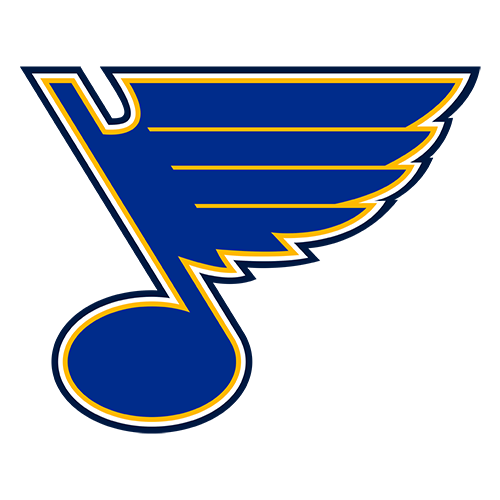
There are two versions of the Blues in 2024-25: The first version was struggling under Drew Bannister; the second version is under the guidance of Jim Montgomery, who was hired to replace Bannister less than a week after his own dismissal by the Boston Bruins.
In Montgomery’s eight games, the Blues have found a defensive cohesion that’s been missing. That problem has been one of the largest challenges facing GM Doug Armstrong in his bid to get the Blues back into the playoffs.
Having four defensemen with no-trade clauses was also a massive hurdle when it came to making changes. What opened the door was when one of those defensemen, Torey Krug, sustained an ankle injury that required season-ending surgery in September.
That played a role in them adding Philip Broberg via offer sheet, with the idea that they could be tempted to potentially add more should a deal that fits within their parameters become available.
Enter Fowler, who now represents another potential change in a season that has already seen quite a few.
His future with the Ducks was already in question following the Jacob Trouba trade. To have another top-four option available at a price that could fit within their salary cap structure made Fowler an attractive option for St. Louis.
Now it’s a matter of determining what sort of role Fowler, who has one more season after the 2024-25 campaign left on his contract, can play on a roster that’s allowing the sixth-fewest goals per game since the Blues hired Montgomery on Nov. 25.
Part of what has helped the Blues is they now have a team save percentage that’s fourth in the league in Montgomery’s eight games in charge; they have risen to 14th for the whole season. They are allowing the eighth-fewest high-danger chances, while sitting 13th in fewest scoring chances allowed per 60 minutes, and are around league average in shots allowed per 60.
That’s one area where Fowler could play a role. Another could be a power play that has struggled before and after they hired Montgomery. They are 20th since Montgomery took over and are 25th on the season.
This could be a win-win deal. Fowler gives the Ducks someone with experience operating a power play. The Blues provide Fowler with the ice time he wasn’t receiving on the man advantage, as he had just 10:07 in power-play ice time this season after reaching the 100-minute mark in all but one season since making his debut in 2010-11.
Fowler could pair with Colton Parayko, a duo that could be the latest building block Montgomery could use to find more consistency.
The Blues entered Saturday four points out of the final Western Conference wild-card spot, and this is a move made with erasing that gap in mind.

Ducks GM Pat Verbeek knew what this season’s climate was like for teams needing a top-four defenseman, having just acquired Trouba for Urho Vaakanainen and a 2025 fourth-round pick.
But the Ducks were facing a different situation with trying to move on from Fowler than what the Rangers were going through before they sent Trouba to Anaheim.
What helped Verbeek is that he had the necessary time to find what he felt was the strongest possible trade. And he made a deal that attained more draft capital for a franchise that’s believed to have one of the NHL’s brightest and strongest farm futures.
There’s that word. Future.
Breaking News from Emily Kaplan
Download the ESPN app and enable Emily Kaplan’s news alerts to receive push notifications for the latest updates first. Opt in by tapping the alerts bell in the top right corner. For more information, click here.
The future is one of the major reasons the Ducks moved on from Fowler, who was less than 10 games from playing No. 1,000 for the club. Drafting and developing young defensemen has become a hallmark of what the Ducks have done over the past few years.
It’s why they’ve brought up Jackson LaCombe, Pavel Mintyukov and Olen Zellweger. And while Drew Helleson was acquired in a trade, he’s a 2019 second-round pick with promise and size.
The improvement by the young defensive core is why Fowler’s power-play minutes significantly diminished this season. And once the Ducks got Trouba, it meant that playing Fowler came at the expense of not playing one of those younger defensemen like Helleson or Zellweger, given LaCombe and Mintyukov have already established themselves as nightly fixtures.
And for a franchise that has shown it is beyond comfortable giving young players a chance to play? Building that young core ultimately led the Ducks down the path to where Fowler was expendable. Getting Trouba, who has one more year left on his deal after this season, was essentially the final push that allowed the Ducks to feel comfortable moving on. — Clark

With goaltending being a major problem for the Colorado Avalanche, could Mackenzie Blackwood be the solution?
The Avalanche acquired Blackwood and forward Givani Smith in a trade with the San Jose Sharks that sees goalie Alexandar Georgiev, forward Nikolai Kovalenko, a 2025 fifth-round pick and a 2026 second-round pick head to the Bay Area. The Avs also retained 14% of Georgiev’s salary.
How did both GMs fare in the trade? Let’s find out.

The Avalanche’s defensive structure ranks in the top 10 of fewest scoring chances allowed per 60 minutes and shots allowed per 60. Unfortunately, their save percentage as a team is second worst in the NHL.
That defensive zone disconnect is why changes needed to be made for an Avs team that’s fighting for a wild-card spot as mid-December draws closer — despite its status as a preseason Stanley Cup favorite.
But it’s also symptomatic of a larger problem with the Avs in that they’ve had issues building a consistently strong supporting cast around their core led by Nathan MacKinnon, Cale Makar and Mikko Rantanen.
Having that supporting cast is what helped them win a title in 2022. Lacking that cast is why they were knocked out of the first round a year later and lost in the second round last season.
Georgiev averaged 39 wins per season in his first two with the team. But that came with questions: Was Georgiev the sole reason he won so many games in Denver? Or was it the structure around him that led to his success?
All Avs GM Chris MacFarland needed was 18 games this season to answer those questions.
It started when Colorado traded Justus Annunen to the Nashville Predators to get Scott Wedgewood. But it became even clearer when Wedgewood’s first win came in relief of Georgiev on Dec. 3 — when the latter allowed four goals on eight shots in the Avs’ 5-4 win over the Buffalo Sabres.
Now the Avalanche are turning to Blackwood and hope he can steady the ship. His .911 save percentage is 12th among goalies with more than 10 games played, while his goals saved versus average is in the top 20.
Blackwood is not perfect, and there are questions about the newest Av:
Is he the answer for a team that has Stanley Cup aspirations? Is he different from the goalie who forced the New Jersey Devils to find alternatives when they made the playoffs in 2023? And while the Avs needed to make a move, was the price they paid to add Blackwood too much given he has never played in the postseason?
We’ll find out the answers to all of these in the coming weeks and months.

Every move Sharks GM Mike Grier makes for the foreseeable future is about building a better tomorrow for the Sharks. The return package for Blackwood will play a role in those plans.
Go back to when Grier acquired Blackwood in 2023. The Sharks parted with a 2023 sixth-round pick to get him from the Devils. Now fast-forward to Monday, and the return Grier received goes well beyond the sixth-round pick he sent to the Devils.
And he still has two pending unrestricted free agent goalies on the roster.
Georgiev’s arrival will impact the Sharks at the NHL level and beyond. He will join a tandem with Vitek Vanecek for a team that came into Monday seven points behind the Avs for the final wild-card spot and seven points ahead of the Chicago Blackhawks for the NHL’s worst record.
Adding Georgiev gives the Sharks seven pending unrestricted free agents. It’s possible that the Sharks could attain additional draft capital ahead of the trade deadline if there’s a team seeking goaltending depth. That’s another reason getting the Avs to retain 14% of his salary was crucial.
All three of the Sharks’ retained salary slots are filled because of previous trades involving Brent Burns, Tomas Hertl and Erik Karlsson. It’s what makes the need for the Sharks to present their pending UFAs as affordable to playoff hopefuls even more crucial.
But where it gets more captivating is how the Sharks now have two experienced options in net, meaning they can take their time with developing top goalie prospect Yaroslav Askarov, who had a 1.96 goals-against average and a .927 save percentage in two games before he was returned to the AHL.
Kovalenko is another player who could also help the Sharks this season and possibly beyond. He gives the Sharks a ninth player younger than 25 on the roster, in a group that includes Macklin Celebrini, William Eklund, Mario Ferraro and Will Smith, among others. Kovalenko, who has four goals and eight points in 28 games, could possibly challenge for a top-nine role. He’s also a pending restricted free agent, which means the Sharks could look to sign him to a new deal or move on from him via another trade.
All in all, another tidy piece of business for Grier. — Clark

The New York Rangers traded defenseman Jacob Trouba to the Anaheim Ducks, ending a tense few months of speculation about their captain’s future.
The Ducks sent defenseman Urho Vaakanainen and a conditional 2025 fourth-round pick to the Rangers for Trouba. Anaheim takes on all of Trouba’s contract, which carries an $8 million average annual value against the salary cap through the 2025-26 season.
The Rangers will receive either the Ducks’ or the Detroit Red Wings’ fourth-round pick, depending on which one is lower in the draft order.

The marking period for this trade began on July 19, 2019. That’s when then-Rangers general manager Jeff Gorton signed defenseman Jacob Trouba to a seven-year, $56 million contract to avoid salary arbitration.
Despite being one of the league’s most effective defensemen at that point — which is why the Rangers acquired him from the Winnipeg Jets in the first place — many thought that Trouba’s $8 million annual cap hit was overcompensation, considering the bell curve of a physical defenseman’s effectiveness in the NHL. The Rangers certainly took that into account: That overcompensation bought them flexibility in the final two years of Trouba’s contract, which carried a no-movement clause from 2020-24 before switching to a 15-team no-trade clause.
That no-trade clause still gave Trouba some agency over his future, as the Rangers discovered last summer when his refusal to submit a list of approved teams early reportedly torpedoed a potential trade with the Detroit Red Wings. But it couldn’t protect him from the Rangers using their nuclear option, which is what ultimately led to Trouba’s trade to Anaheim.
Please recall when the Rangers placed forward Barclay Goodrow on waivers in June, clearing the last three years of his contract off their books when the San Jose Sharks claimed him in a prearranged move. There’s no question that GM Chris Drury pointed to that example and told Trouba, “This could happen to you.”
You could be on a rebuilding Chicago Blackhawks team that just fired their coach. Or the San Jose Sharks. Or the Red Wings, with whom you didn’t want to play last summer. Or shuffle back up to Canada, not as a Winnipeg Jet but as a Montreal Canadien. Such was the waiver wire.
Or Trouba could select from the potential trade destinations placed in front of him, waiving his no-trade clause for one of them.
With that, the captain of the New York Rangers is now a member of the Anaheim Ducks.
Part of this grade goes to the Rangers’ front office in 2019, when Drury was an assistant GM, for having the foresight to create this pressure point. And part of it goes to Drury, who exerted that pressure to move Trouba’s cap hit off the books, remove an ineffective defenseman from his blue line and send a shock to the system of a struggling team.
The Rangers are 13-10-1 this season. They’re in a wild card. But they’ve lost six games in regulation out of their past seven. Drury was so displeased with what he saw that he put out a memo to 31 other NHL teams telling them he was open for business and mentioning Trouba by name.
Trouba has been a liability all season. He’s in the negatives across the board analytically relative to his teammates, including a 47.5% expected goals percentage. He has just six assists in 24 games, skating to a minus-3. Even the one thing the Rangers used to depend on from Trouba — physicality — was down, as he averaged 4.87 hits per 60 minutes after averaging 7.81 last season.
Of course, it should be said that Drury basically made him a lame duck, and that has to impact his performance.
In the immediate term, the trade opens up ice time for Braden Schneider and Victor Mancini, two players the Rangers are eager to see develop.
(Vaakanainen, whom they received from Anaheim, is a spare at this point, and was a healthy scratch for the Ducks this season.)
But taking the long view, we’ve now seen the other shoe drop for the Rangers: Clearing Trouba’s salary allowed them to finally sign goalie Igor Shesterkin to his new contract worth $11.5 million against the salary cap — a record for NHL goalies. Which certainly alleviates one point of long-term planning stress for Drury and only increases this grade
Whether or not the roster shake-up goes beyond Trouba remains to be seen. Don’t forget, Chris Kreider’s name was in that Drury memo, too.
But getting Trouba off the books and off the ice was something the Rangers had been attempting for months. With more than a gentle nudge, he has sailed to the Pacific.
Nothing like trading your captain through pitiless means to get a locker room’s attention.

I don’t hate this from the Ducks’ perspective.
Trouba is a better defenseman than the majority of the blueliners on the Anaheim roster. That’s assuming some of his poor play was due to the Rangers basically standing in the doorway with his bags packed for six months, which will certainty weigh on a guy.
At least now he’s with a team that he begrudgingly picked, with a couple of former teammates (Ryan Strome and Frank Vatrano) and a general manager in Pat Verbeek who says kind things such as “on the ice, he competes every shift, leads by example and is a presence on the blue line every night.”
Verbeek also called him “a big part of our future success,” and hopefully that means as a mentor to young defensemen rather than signing Trouba until he’s 37 when his contract runs out after the 2025-26 season. The Ducks have up-and-comers such as Pavel Mintyukov, Olen Zellweger, Drew Helleson and Jackson LaCombe on the roster, with players such as Stian Solberg and Tristan Luneau in the pipeline. Trouba can be a “lead by example” type, having excelled offensively and defensively during his career. After six seasons in Winnipeg and six more in New York, he has seen some things.
Breaking News from Emily Kaplan
Download the ESPN app and enable Emily Kaplan’s news alerts to receive push notifications for the latest updates first. Opt in by tapping the alerts bell in the top right corner. For more information, click here.
It’s safe to say that Trouba is in decline at 30 years old. He might have been a liability with the Rangers, but the bar is set rather lower in Anaheim. This is an atrocious defensive team. The Ducks are giving up 3.14 expected goals against per 60 minutes at 5-on-5, last in the league and the only NHL team over three expected goals against on average this season. They earn only 45% of the shot attempts in a game, 31st in the NHL. No one gives up more high-danger shot attempts (13.5 per 60 minutes) than Anaheim — although please note that the Rangers were right behind them (13.1).
The Ducks have prioritized physicality, and Trouba can bring that. The idea that Anaheim can roll out Radko Gudas and Trouba on the same defense should have Western Conference opponents already reaching for the Advil.
They didn’t give up anything for him. Even if Vaakanainen was playing, which he wasn’t, the Ducks were dealing from a position of depth. The fourth-rounder is expendable, given they had two. The $8 million salary cap hit shouldn’t impact them much next season: While Mason McTavish will need a new deal this summer, Leo Carlsson’s big-ticket second contract won’t be until after Trouba’s expires.
Plus, if he finds his game in Anaheim and the Ducks aren’t in the playoff mix next season, they could always retain salary and flip Trouba at the 2026 trade deadline. He’s exactly the kind of defenseman who has value for contenders at the right price.
Verbeek said, “It’s rare you are able to acquire a player with Jacob’s experience, stature and ability.”
Despite this decline and the growing flaws in his game, that’s undoubtedly true, and especially for this compensation. The Ducks need more adults in the room. They landed themselves an NHL captain, who can hopefully find more effectiveness in a place where he’s wanted. — Wyshynski

In need of a change, defenseman David Jiricek found one Saturday when the Columbus Blue Jackets traded the former No. 6 pick to the Minnesota Wild.
The Wild received Jiricek and a 2025 fifth-round pick, with the Blue Jackets receiving a top-five protected 2025 first-round pick, a 2027 second-round pick, a 2026 third-round pick, a 2026 fourth-round pick and defenseman Daemon Hunt.

Last season allowed the Wild to draw two conclusions about the state of their defense.
The first was that they appear to have a legitimate franchise cornerstone in Brock Faber, who finished second in Calder Trophy voting. The second was that the team needed to figure out how to continue to get younger on the back end, especially with injuries ravaging a unit that had quite a few players — Zach Bogosian, Jonas Brodin, Jon Merrill and captain Jared Spurgeon — all older than 30.
That process began in 2021 when they used one of their two first-round picks to select Winnipeg Ice defenseman Carson Lambos. They acquired Faber in 2022 in the Kevin Fiala trade with the Los Angeles Kings. In June, they used their first-round pick (No. 12) to draft University of Denver defenseman Zeev Buium. Now, they have added Jiricek, the sixth pick in the 2022 draft.
Editor’s Picks
2 Related
As for what this all means for this season?
Much of that could depend upon Jiricek. Part of what made him available in the first place was the belief that he was unhappy with his role in Columbus. He was averaging 11:11 in six games while logging less than 10 minutes over what became his final three contests before he was sent to the AHL.
Jiricek will remain in the AHL, where he will use his time with the Wild’s affiliate to push for a role at the NHL level. Jiricek is a 6-foot-4 puck mover, and those traits have come through in the AHL, where he’s scored 15 goals and 60 points in 88 games. This season, he has two goals and three points in four games.
Whether he can find a way to translate his AHL production to the NHL is the looming question. If he can, he’ll give the Wild another facilitator with size who could be trusted to play key minutes. Beyond that, he could give the Wild those minutes on his entry-level contract, which is important for a franchise that’s had to become adept at spending cap space because of the combined Zach Parise and Ryan Suter buyouts that currently cost $14.7 million but will fall to $1.66 million next season.
The Wild (15-4-4) were two points behind the Winnipeg Jets for the best record in the NHL and the Western Conference entering Saturday. They’re allowing the fewest goals per game in the NHL this season, the fewest high-danger scoring chances per 60 and rank in the top 10 in the fewest scoring chances allowed per 60.
Not only have they established consistency, but the Wild also have the depth to go with that continuity. Faber is one of three defensemen who have played in every game, while four of their defenseman have appeared in more than 16 games this season.
Maintaining that level means the Wild don’t have to be in a rush to call up Jiricek and can let him settle into their system. And if the Wild can remain in the hunt for a top seed, they’ve essentially added a one-time top-six pick for what will ultimately become a first-round selection that’s toward the bottom of the draft.
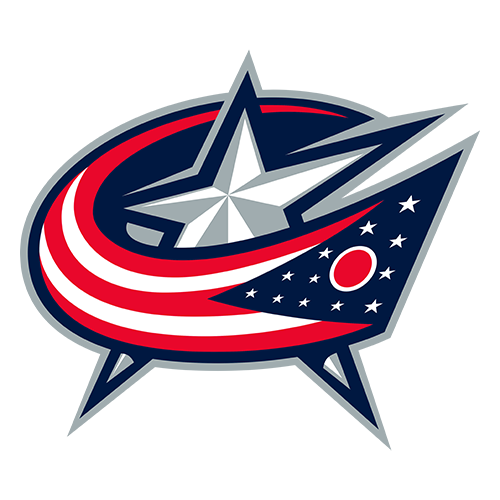
Moving on from a one-time top-10 pick such as Jiricek comes with the question about if a franchise has received or has come close to receiving a return of equal value.
It appears that Blue Jackets GM Don Waddell was able to achieve that by getting a sizable haul along with a defenseman who can play right now with Hunt.
NHL trade deadline content

The trade deadline for the 2024-25 NHL season is March 7. This year’s coverage will include a special episode of The Point, from 2-4 p.m. ET on ESPN2 and ESPN+. Get caught up here before the big day:
• Team-by-team guides
• Top players available
• Contender flaws (and solutions)
• Grades for all the big trades
At the time of the trade, the Blue Jackets (10-9-3) look as if they could go in a few directions this season. On Saturday, they were two points out of the final Eastern Conference wild-card spot while also being within five points of having the NHL’s worst record.
The fact Jiricek struggled to get minutes and was sent to the AHL before being traded shows that the Blue Jackets were comfortable with their dynamic in the interim. But how this could work out for them in the future is where it gets interesting.
Waddell’s time in charge of the Carolina Hurricanes saw the club rely upon the draft to build a roster that has since become one of the NHL’s perennial favorites to win the Stanley Cup. One of the ways the Hurricanes reached that destination was to have as many draft picks as possible.
With this trade, the Blue Jackets now have 27 draft picks over the next three seasons.
Another detail that could factor into the decision to move on from Jiricek is the defensive youth the Blue Jackets have on their NHL roster and in their farm system. Five of the seven defensemen on the Blue Jackets’ active roster are younger than 27. That does not include Hunt.
They also have youth in their system. They used one of their three first-round picks in 2021 to draft Corson Ceulemans. A year later, they used one of their two first-rounders to take Denton Mateychuk. Of course, the other player they drafted in the first round that year was Jiricek. They also used four of their six picks to draft defensemen in 2024, with the most notable being Charlie Elick, who went in the second round. — Clark

